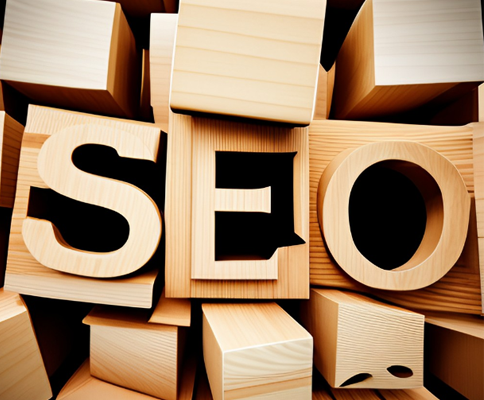Search engine optimisation (SEO) is essential to any successful website or blog. SEO helps ensure your content is seen and read by the right people, increasing visibility and driving more traffic to your site. On-page SEO involves optimising each web page on your site for both search engines and users. When done correctly, it can significantly impact search engine rankings, user engagement, and conversions. In this blog post, we’ll explore some of the most important on-page SEO factors to consider when developing or updating a website so you can optimise for maximum success.
What is On-Page SEO?
On-page SEO is a crucial aspect of any successful website or blog. Put, on-page SEO refers to optimising individual pages on a website for search engines. This includes various factors, such as the content on the page, the website structure, and the use of relevant keywords. By optimising these elements, you can improve your page’s ranking on search engine results pages (SERPs) and drive more traffic to your site. However, it’s important to note that on-page SEO is just one part of a comprehensive SEO strategy. For maximum impact, it should be combined with off-page tactics like link-building and social media marketing. Understanding the basics of on-page SEO is an informative and essential component of any online marketing plan.
On-Page SEO Factors and Best Practices
On-page SEO or on page optimization factors and best practices refer to the optimisation techniques applied directly on a webpage to improve its visibility and ranking in search engine results. Here are some critical on-page SEO factors and best practices:
Keyword Research
Conduct thorough keyword research to identify relevant keywords and phrases your target audience uses to search for your content.
Keyword research is an essential component of any successful digital marketing strategy. It involves investigating and analysing the search terms and phrases your target audience uses to find content on your website. By conducting in-depth keyword research, you can identify the most relevant keywords to your niche and use them to create high-quality, informative content that resonates with your target audience. Not only does this help to improve your website’s search engine rankings, but it also allows you to better tailor your content to the needs and preferences of your audience, resulting in higher engagement and conversion rates. Ultimately, investing time and effort into keyword research is crucial to achieving your marketing goals and building a solid online presence.
Title Tag Optimisation
Craft compelling and keyword-rich title tags that accurately describe the page’s content. Keep them within 60-70 characters to ensure they are correctly displayed in search results.
Title tag optimisation is a crucial aspect of SEO that businesses and website owners must pay attention to. It involves creating compelling title tags that accurately describe the page’s content.
Incorporating relevant keywords in your page title and tags gives search engines a strong signal of what your page is about, which can help improve your search engine ranking and drive traffic to your site. However, it is essential to ensure that your title tags are well-crafted and concise, as search engines usually display only 60-70 characters of your title tag in search results. For an informative and compelling website, it is crucial to prioritise title tag optimisation to increase your site’s visibility and attract more potential customers.
Meta Description Optimisation
Write concise and informative meta-descriptions page titles that summarise the content of the page. Include relevant keywords and encourage users to click through to your website.
Meta description optimisation is a crucial element of any successful SEO strategy. By crafting concise and informative meta descriptions, you provide users with a clear idea of what they can expect on your webpage. Including relevant keywords in the meta description is essential to increase the likelihood of ranking higher in search engine results. An engaging meta description can also entice users to click through to your website, improving traffic and leading to higher conversions. Remember, the meta description is often a user’s first impression of your webpage, so make sure you optimise it wisely.
Heading Tags
Use proper heading tags (H1, H2, H3, etc.) to structure your content. Include target keywords in your headings to help search engines understand the context of your content.
When creating content for your website or blog, it’s essential to use proper heading tags to structure your text. Heading tags, or H1, H2, H3, etc., allow readers to navigate your content and understand its organisation easily. Additionally, including target keywords in your headings can help search engines better understand the context of your content and improve its search ranking. Using informative headings, you can create a more accessible and engaging experience for your readers while optimising your content for search engines. So pay attention to the importance of proper heading tags in your content creation process!
URL Structure
Create clean and user-friendly URLs that are descriptive and include relevant keywords. Avoid using lengthy or complex URLs.
In the world of SEO, URL structure can make all the difference in driving traffic to your website. A clean and user-friendly URL makes it easy for humans to remember and share your website and signals to search engines that your content is relevant and valuable. When creating URLs, it’s essential to remember that they should be descriptive and include relevant keywords. However, it’s equally important to avoid length or complexity that could confuse users or dilute the meaning of the URL. In short, if you want your website to be easily found and appreciated by users and search engines, make your URLs informative, clear, and concise.
Keyword Placement
Incorporate your own target keyword keywords naturally throughout your content, including in the opening and closing paragraphs, subheadings, and body text.
Keyword placement is an essential aspect of creating informative content. It’s not enough to include your target keywords in the body text; they must also be integrated organically into anchor text, the opening and closing paragraphs and in subheadings. Ensuring that your keywords are thoughtfully placed throughout your content can improve your website’s SEO, making it easier for potential customers to find you online. By naturally crafting content that includes your target keywords, you can increase the relevance and usefulness of your content to your audience, ultimately helping you achieve your online objectives.
High-Quality Content
Create unique, informative, and engaging content that provides value to your audience. Aim for comprehensive and well-structured content that satisfies user intent.
High-quality content is more than just words on a page; it’s information that provides value to your audience. Whether you’re creating content for your website, social media, or email campaigns, it’s essential to focus on creating informative and engaging content that satisfies user intent. This means taking the time to research your audience and their needs and then structuring your content in a comprehensive and well-organised way. By providing your audience with high-quality content, you can establish yourself as a thought leader in your industry while fostering a sense of trust and loyalty with your readers.
Image Optimisation
Optimise your images by using descriptive file names and alt tags. Compress images to reduce page load time and improve user experience.
Image optimisation is crucial in creating a seamless user experience on your website. You can increase website speed and boost SEO efforts by optimising images. The process begins with using descriptive file names, which should be concise and relevant to the content they represent. Additionally, image alt text and tags should be added to every image as this describes the image to search engines. Compressing ideas can improve load time and prevent website visitors from navigating away due to lengthy wait times. Effective image optimisation techniques will improve website user experience and play a vital role in achieving higher search engine rankings.
Internal Linking
Incorporate internal links within your content to guide users to relevant pages on your website. This helps search engines understand the hierarchy and relationship between your web pages.
Internal linking is one of the most essential tools to guide users through your website. By incorporating internal links within your content, you can help visitors quickly navigate to the most relevant pages. This improves user experience and enables search engines to understand the hierarchy and relationship between your web pages. When done correctly, internal linking can be a potent tool to improve your website’s traffic and engagement. However, it is essential to make informed decisions when deciding where to place your internal and external links. By understanding your website’s hierarchy, you can strategically link your pages together to benefit both your users and your SEO efforts.
User Experience Optimisation
Ensure your website is user-friendly and provides a positive user experience. Improve page load speed, mobile responsiveness, and navigation to enhance user satisfaction.
User experience optimisation is essential to delivering a satisfactory experience to website visitors. In today’s fast-paced digital world, a slow-loading website can quickly turn off users and hamper your efforts to engage potential customers. To ensure that your website provides a positive user experience, it is essential to focus on improving page load speed, mobile responsiveness, and seamless navigation. By putting yourself in the shoes of your target audience and making user experience optimisation a priority, you can create a website that is informative and user-friendly. Whether you’re running an e-commerce website or simply providing online content, enhancing the user experience can make a significant difference in achieving your business objectives.
Mobile-Friendly Design
Optimise your website for mobile devices, as mobile-friendliness is a crucial ranking factor. Use responsive design and test your website’s mobile usability.
In the web design and development world, mobile-friendliness has become an essential factor to consider. As more and more people access the internet through their smartphones and tablets, optimising your website for mobile devices is crucial. Not only does this ensure a smooth user experience for your visitors, but it has also become a critical ranking factor for search engines. Thus, adopting a responsive design and testing your website’s mobile usability is necessary. Doing so can drive better engagement, improve user satisfaction and ultimately boost your website’s traffic. So, it’s time to optimise your website for mobile devices and make it an informative and user-friendly experience for everyone who visits.
Schema Markup
Implement structured data markup to provide additional context to search engines about your content. This can enhance the visibility of your website in search results.
Implementing schema markup is an informative way to provide search engines with additional details about your content. By implementing structured data markup, you can enhance the visibility of your website in search results. This means that when someone searches for a topic relevant to your content, your website will appear in the search results with additional context for the user. Schema markup can provide information about everything from reviews and ratings to location and event details. Using schema markup, you can provide search engines with more prosperous, informative data, leading to higher search engine rankings and better visibility for your website.
Page Loading Speed
Optimise your website’s loading speed by minimising code, compressing images, leveraging browser caching, and using content delivery networks (CDNs).
Page loading speed is a crucial aspect of website optimisation that directly affects user experience. Visitors expect websites to load quickly; slow-loading pages can drive them away. To optimise your website’s loading speed, it’s essential to understand the underlying factors that contribute to it. This includes minimising code, compressing images, leveraging browser caching, and using content delivery networks (CDNs). These elements can be optimised relatively easily with the right tools and techniques. By taking the time to optimise the loading speed, you can improve user experience and ultimately boost your website’s traffic and engagement.
Social Sharing
Encourage social sharing of your content by integrating social sharing buttons. This can increase the visibility and reach of your content.
Social sharing is critical when it comes to increasing the visibility and reach of your content. But how can you encourage others to share your content? One crucial step is to integrate social sharing buttons directly into your content. These buttons make it easy for others to share your content on their own social media channels and serve as a visual reminder that your content is shareable. By making the sharing process as simple and accessible as possible, you can increase the likelihood that others will pass on your informative content to their followers, thereby expanding your potential audience.
Content Formatting
Use proper formatting techniques like bullet points, numbered lists, and subheadings to make your content scannable and easy to read.
Effective content formatting is an informative technique that can make your writing more engaging and easier to consume. Using features like bullet points, numbered lists, and subheadings, you can break up your content into smaller, more digestible pieces that are easier for readers to scan. This approach can improve the overall readability of your text and ensure that your key points are more easily understood. Whether you’re writing for the web or print media, content formatting is an essential tool that can help you create more engaging and informative content to captivate your audience.
Remember that on-page SEO is just one aspect of optimising your website for search engines. It should be combined with off-page SEO strategies, technical SEO, and other factors to achieve optimal results.

Frequently Asked Questions
How do keywords impact on-page SEO?
Keywords play a crucial role in on-page SEO as they indicate the topic and relevance of your content to search engines. By conducting thorough keyword research and strategically placing keywords throughout alt text of your content, you can optimise your pages for specific search queries and improve their visibility in search results.
What is the ideal length for title tags and meta descriptions?
Ideally, Title tags should be within 60-70 characters, while meta descriptions should be around 150-160. Keeping them within these limits ensures they are correctly displayed in search results and entices users to click through to your website.
How does user experience affect on-page SEO?
User experience is an important on-page SEO factor. Search engines consider page load, site speed up, mobile-friendliness, easy navigation, and engaging content when ranking websites. A positive user experience improves your chances of ranking higher, keeps visitors on your site longer, and encourages conversions.
Is content quality important for on-page SEO?
Yes, content quality is crucial for on-page SEO. Creating high-quality, unique, and informative content that addresses user search intent and provides value is essential for attracting organic traffic, engaging visitors, and establishing your website as a credible source of information.
What is schema markup, and how does it impact on-page SEO?
Schema markup is a structured data markup language that provides search engines with additional information about your content. By implementing schema markup, you can enhance the visibility of your website in search results, increase the chances of rich snippets, and improve the understanding of your content by search engines.
Should I optimise my website for mobile devices?
Yes, optimising your website for mobile devices is crucial. With the increasing use of smartphones, search engines prioritise mobile-friendly websites. Responsive design, fast loading speed, and user-friendly mobile navigation are essential for providing a positive mobile user experience and improving your on-page SEO.
How can I measure the effectiveness of my on-page SEO efforts?
You can measure the effectiveness of your on-page SEO efforts by monitoring key metrics such as organic search traffic, keyword rankings, bounce rate, time on page, and conversions. Analysing these metrics through tools like Google Analytics can provide insights into the performance and impact of your on-page SEO strategies.
Conclusion
All the factors that are mentioned above are important aspects of On-Page SEO. Reviewing and optimising all of these elements is essential if you want your website to appear higher on the search engine rankings. An effective combination of relevant keywords, desirable meta descriptions, optimised content, page loading speed, mobile design, and other elements can help ensure that your web pages will rank well in search engine results. It’s even recommended to continually re-visit and optimise existing page content for better rankings; this could involve making minor cosmetic changes or even more extensive alterations to capture a larger audience. Overall, the constant improvement of On-Page SEO efforts helps promote web visibility and bring success to your business online.






